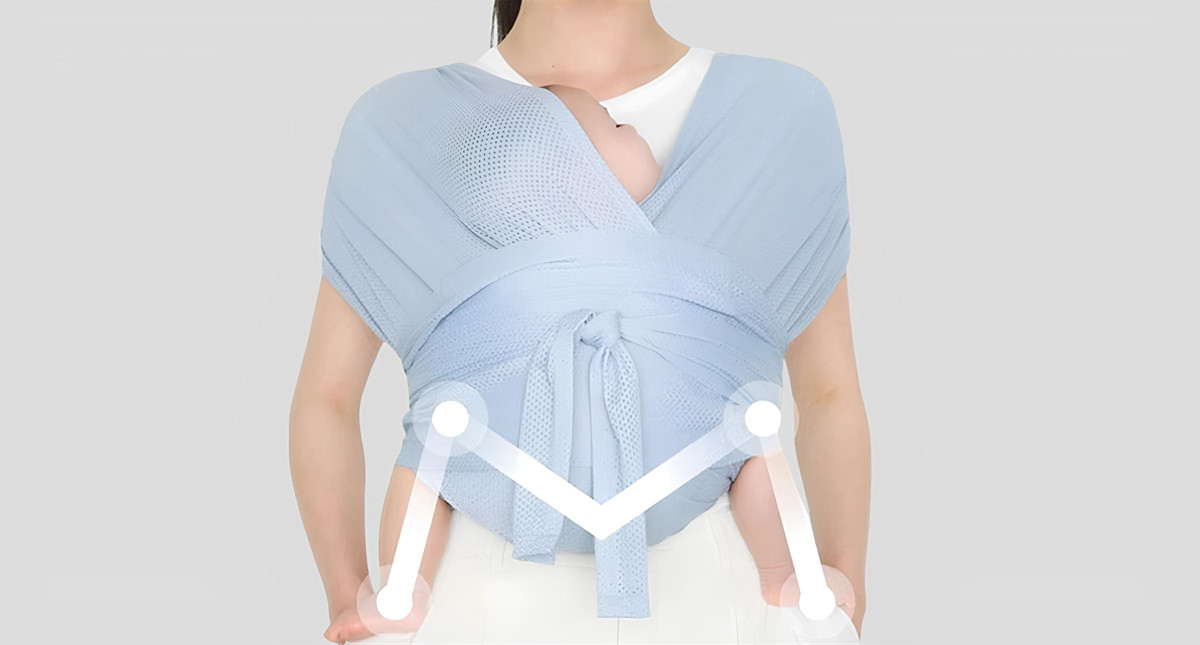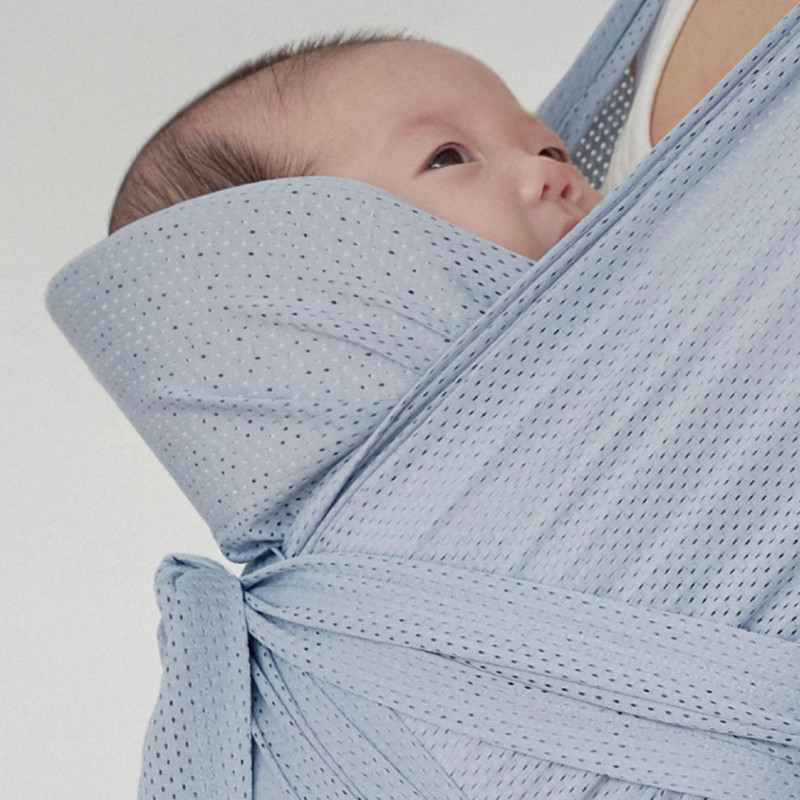
How should your baby’s legs be positioned when using a baby carrier?
Correctly placing your baby’s legs is an important part of ensuring their comfort and safety. Here are some suggestions:
M-shaped leg position
Make sure your baby’s legs are bent in an “M” shape. This means that their thighs form an outward curve with the body at the hip joint, just like the letter ‘M’. This helps normal hip development and reduces uncomfortable pressure on the baby’s hips.
Supported bottom
The baby’s bottom should be supported rather than hanging in the carrier. Make sure the carrier provides enough support so that the baby’s weight is evenly distributed over the hips and thighs.
Avoid dangling legs
Avoid letting your baby’s legs hang in the air for long periods of time as this can be detrimental to the development of the hips and legs. Legs should hang down naturally, not suspended outside the carrier.

Appropriate height
Make sure the carrier is adjusted to the proper height so that your baby’s legs are in their natural position, not too high and not too low. This helps to maintain comfort and support.
Leave enough space
Make sure you leave enough space around your baby’s legs so they can move freely. Do not make the carrier too tight to ensure proper blood circulation.
Every baby’s size and rate of development is unique, so it’s important to regularly check and ensure their legs are in a comfortable and secure position when using a baby carrier. If you have any concerns or are unsure, it is advisable to consult your paediatrician or a professional carrier consultant.
